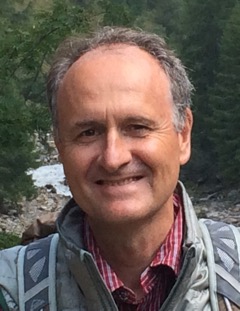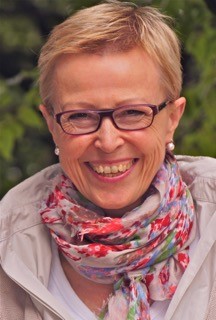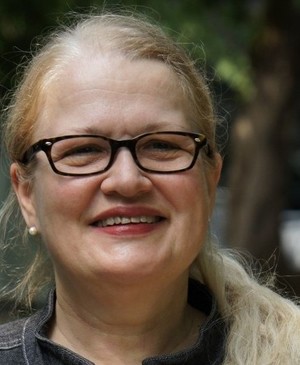How big can a circle be and still be effective? Read the story from our circle colleagues, Matthias zur Bonsen, Jutta Herzog and Myriam Mathys, known in Europe for their large group facilitation skills. Here they tell us how they hosted circles for three hundred people, with remarkable results.
The Power of Large Circles
We want to tell the story about our work with a Catholic diocese in Germany. It’s a story about building up a new level of communication and trust in a situation of severe mistrust. It’s a story about building up hope and joy and letting go of projections, anger and fear - a basket full of shadows. And, it's a story about the transforming power of circles - very small ones and especially very large circles.
Some time ago we got a call from the bishop of a Catholic diocese in Germany because we have a reputation as facilitators of large groups. We were asked to help the diocese with a dialogue process it had prepared half a year earlier, and which was now likely to fail before it had even been implemented. The envisioned process would involve several hundred members of the diocese. Five large events, each with 300 participants, were scheduled for a period of eighteen months. The situation had now become challenging because there was much negativity for many reasons: parishes had been merged and churches had been closed; the bishop was perceived as a distant, intellectual leader; people were dissatisfied that some contentious Catholic issues - e.g. how to deal with married-again divorced people - had become stagnated.
The Circle Way Helps Us Understand
The morning after our first meeting with the planning group, we (Jutta and Myriam) sat down in a small circle of two, lit a candle between us, and began a prolonged talking council around the question “What is really needed here?” From our experience this is a good preparation for ourselves and for the large circle ahead. In this small reflection circle, passing the talking piece back and forth, we were inviting in and invoking the large group to help us sense into what really is needed here. This small circle conversation produced three pages of reflections on our perceptions, which we then decided to send to the bishop.
This practice of regularly sitting in our own small reflection circle, preparing a report of our perceptions and thinking, and sending it to the bishop was repeated several times during the eighteen months’ of this whole process.
The Circle Way Helps Others Understand
Soon we discovered there was a big need for people in the diocese to talk and to be heard about matters concerning them within their churches. Following Jutta’s impulse – based on our good experience with “The Circle Way” – we designed an opportunity for 300 participants of the first dialogue meeting to sit in one big circle, consisting of four concentric circles.
While we had much prior experience working with large groups, including hosting circles of 150 people, this usually meant many small groups in one room. This would be our first experience inviting 300 participants to sit in one large circle for a considerable part of the time. We would need to convince the bishop that this was the best way to tackle the difficult situation.
At the first large group meeting, we began in small circles for a check-in and to share hopes and fears for the process. We then invited them to share with each other, stories about moments in their lives that were essential for the fact that they – despite nuisance and lamentation – were still active Catholics, here today, committed to participate in this dialogue process. These stories, first shared in the small circles, were then shared in the large circle of 300.
What happened was amazing!
SPIRIT came into the room during this one-and-a-half-hour story telling circle, which we named “the listening circle.” Participants entered the large circle’s center, picked up the microphone, and spoke about their pain, their anger and their hopes. Some spoke in a very agitated manner directly to the bishop while others around the circle listened attentively. The bishop didn’t react to these difficult messages. He patiently listened. Only at the end did he speak words of understanding and gratitude for the openness. After this first meeting, participants were enthusiastic. One of them said “we have a listening bishop,” a sentence echoed in the local media the following day. A deep healing process began and the people – including the bishop – felt new hope.
At the second meeting, again with 300 participants, we asked the group to identify concrete change initiatives. While there were good results, there was also disappointment in the room as participants had expected to get into a deeper dialogue with the bishop, especially about contentious issues. It was a critical phase. Some participants wanted to get rid of us as facilitators. However, the bishop’s trust in us and in our experience to do this work prevailed. In response to this emerging dissent, he committed to schedule an additional large group circle meeting several weeks later to deepen the dialogue with his people.
In one of our planning meetings, the bishop mentioned that he and the vicar-general (second in the diocese hierarchy) had sat together and written down their vision for their diocese. We convinced them to share their dream with the participants at this next meeting. Standing in center of this large circle, by the artistically crafted big cross with a candle in its vertical branch, the bishop and his vicar-general talked about their dreams of what their church could become.
It was marvelous what happened then – participants of the large group took leadership as they, too, spoke about their dreams for the diocese. The bishop and his vicar-general were perceived as equal to the participants. At the end of the meeting we invited everyone to put cards written with their vision-statements around the circle’s center, now enlarged, enlivened and made more meaningful for everyone.
There were several subsequent large group meetings over the months. After the inevitable ups and downs inherent in such an extensive dialogue process, the whole group developed together a “picture of the future” for their diocese. Participants were eager to bring it to life. It was a strong beginning for an ongoing, transformative process in this diocese.
The Impact of Large Circles
As facilitators and circle hosts, we learned large circles have a special impact on those participating, being an unforgettable experience for many. We noticed:
- People appear to enjoy “closing ranks” and telling their truths to a large crowd.
- Large circles help to strengthen a sense of community.
- Conflicts arise and can be resolved as the metaphorical “camp fire in the middle” burns free hope, passion and aspiration.
By applying our skills in facilitating The Circle Way - attentive to the circle guidelines and components - both to help us prepare ourselves, understand and design, and then to host others, it has become a memorable experience and extension in our facilitation practice.
Read this post for tips on how you, too, can host large circles using The Circle Way.
Matthias zur Bonsen - Circle facilitator and trainer, Matthias spearheaded the translation of The Circle Way into German, and co-wrote the introduction of the German version with his colleagues Jutta Herzog and Myriam Mathys. He enjoys supporting organizations and groups unleashing their untapped potential and loves to help senior leaders discover ways to achieve more with less effort. See the websites: www.all-in-one-spirit.de and www.leadingwithlife.com for a full description of his work.
Jutta Herzog - Jutta has produced two movies featuring groundbreaking large group methods. She is a circle facilitator and trainer and senior consultant for organizational change and development with a passion for assisting top level leaders bringing to life their deepest wishes for their organizations. As well she loves working with small and large groups by being aware that leadership is in everyone. See the websites: www.all-in-one-spirit.de and www.leadingwithlife.com for a full description of her work.
Myriam Mathys - Committed to bringing The Circle Way method and attitude to communicate with each other especially into the business world, Myriam observes how marvelous leading teams can transform their meetings with added efficiency and effectiveness once they have been trained to have high quality dialogues in Circles! She is also a facilitator and trainer for World Café, Open Space Technology and Dynamic Facilitation. Convinced of the need for a holistic leadership development, she is passionate to support leaders, teams and organizations in their ways to unfold their full potential. See the websites www.all-dimensions.com or www.leadingwithlife.com for a full description of her work.





